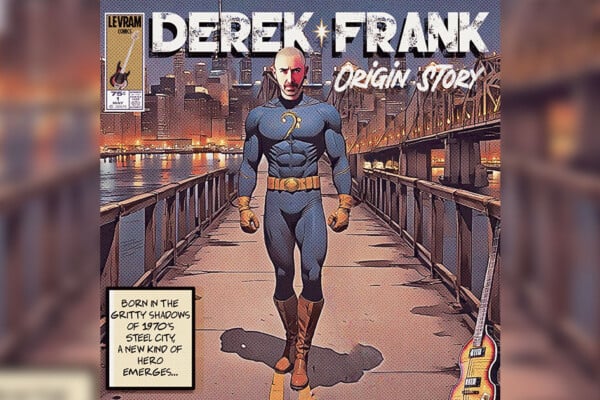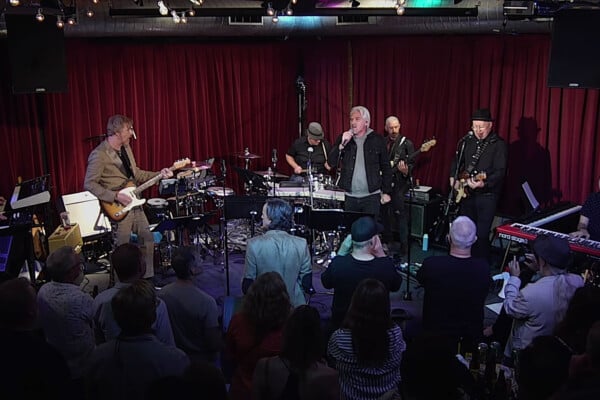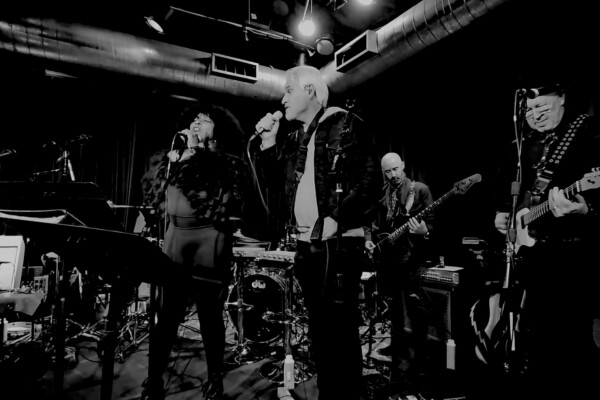Bass Tracks: An Interview with Derek Frank
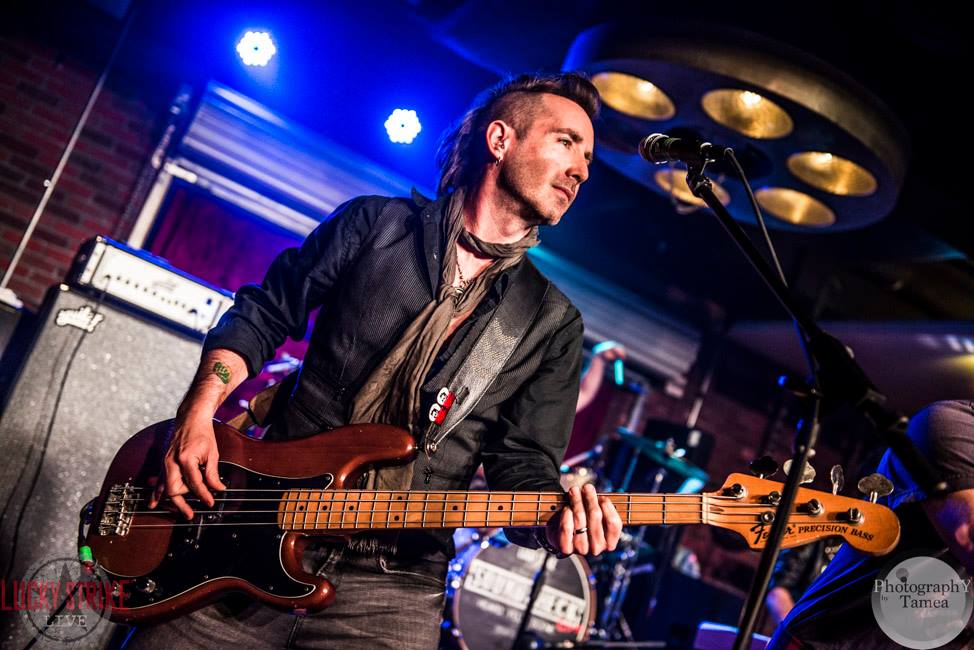
When you take a look at a list of his current gigs, it’s a wonder that Derek Frank gets any sleep at all. The L.A. bassist and musical director has been busy laying down the low end for Shania Twain, Air Supply, Mindi Abair and the Boneshakers, and The Dirty Diamond, to name a few. That’s not to mention his standing Hollywood gig for Soundcheck Live.
Raised in Pittsburgh, Frank got turned onto music at an early age and began gigging at just 15 years old after his family moved to Cleveland. He got early music training at the Interlochen Arts Academy before heading to the University of Miami. During his summer breaks, the bassist continued to hustle and hone his skills by working on cruise ships. After a brief stint in Boston, he headed to Los Angeles where his work grew to the world stage.
Besides being a fantastic bassist-for-hire, Frank writes his own music and released a solo album called Let the Games Begin… in 2010. He also does freelance recording through a website called BassTracksOnline.com.
We luckily caught Frank between gigs to learn more about his background, how he does what he does, and all the beautiful gear he uses.
How did you get your musical start?
I was always really into music, even as a toddler… I believe it started with the Queen album News of the World, which my parents had on 8-track. When I was old enough to start guitar lessons, my parents bought me a red Strat copy guitar. About six months later, I was killing time in my local music store before my lesson and decided to try out a bass. At the time, I didn’t even know the difference between guitar and bass… Once that bass was in my hands, it just FELT right, and I knew that my instrument had just chosen me. I saved up some money caddying at our local golf course, bought a used Kramer Duke bass for $180, and I was on my way!
What made you decide on L.A. versus other big music cities?
Well, LA kind of happened by accident. After college in Miami, and a brief stint in Boston, I decided to move to San Francisco. I had some friends there that were making a living playing jazz, and that’s where my head was at the time. My parents had moved to LA while I was in college, so my plan was to spend a summer with them in LA before heading up to San Fran. I had a lot of college friends who were getting things rolling in LA, and I started getting called for gigs fairly soon after arriving in town. As I got involved in the scene and saw how much was happening in LA, I decided to stay. Best decision I ever made! The music scene here is obviously amazing, but LA also just suits me in so many ways. I’ve been here 20 years, and have no intention of leaving.
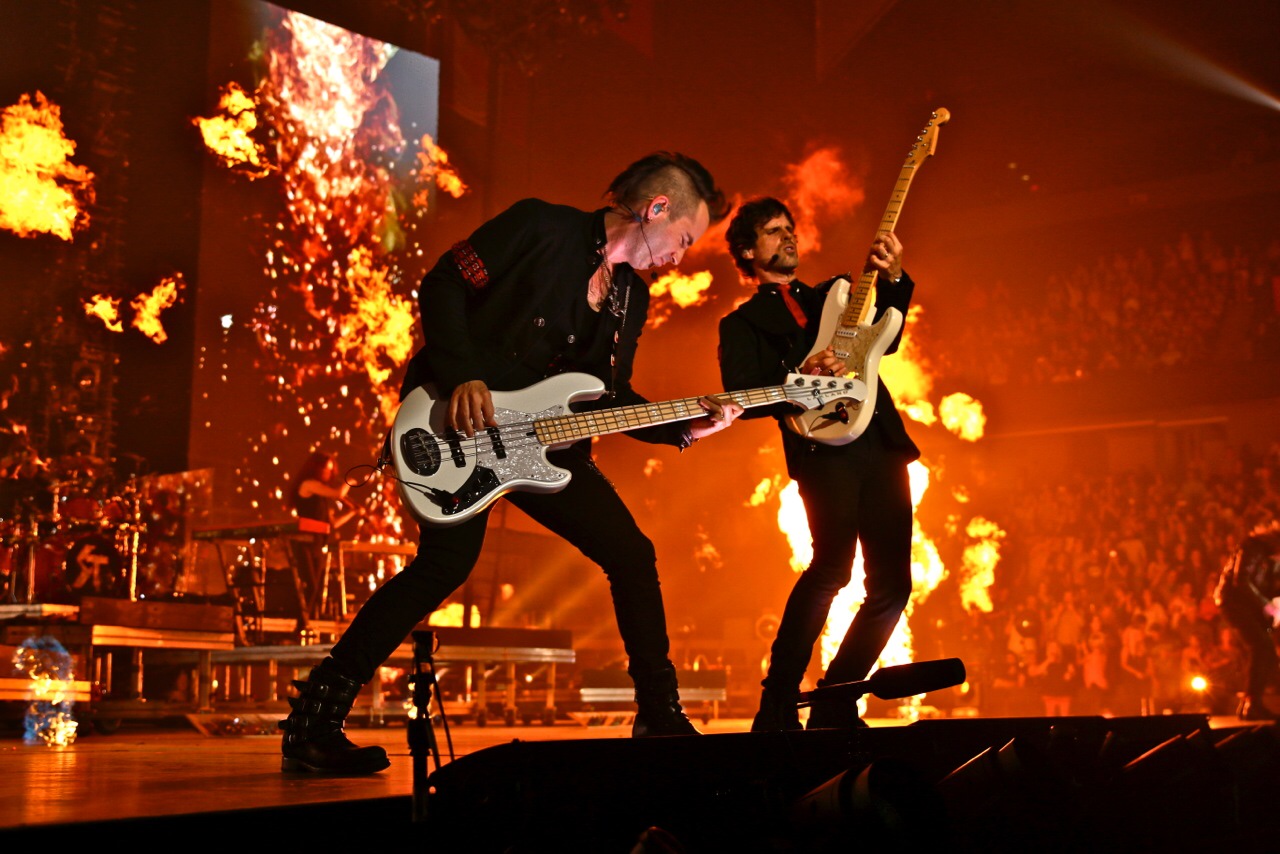
What do you consider your first break?
Well, my first official tour happened in 2002, with legendary Hammond B-3 Organ player Brian Auger. I had been in LA for almost five years, keeping myself busy primarily on the local scene. My buddy Dan Lutz had been playing with Brian for a couple of years but had to step out of the band for some reason. He recommended me, and after a jam at Brian’s house in Venice, I was invited to hit the road with his band, Brian Auger’s Oblivion Express. I ended up playing with the band full-time for about four years, and since then I’ve jumped in to fill in on various tours from time to time all the way up until present day.
What started you on your path to the bassist-for-hire world?
I’ve always been into various genres of music, so I never had one specific type of band I wanted to play in. My dream wasn’t so much to become a famous rock star; it was more or less to just play good music with good people, and make a living doing it. Once I moved to LA, I wanted to do everything… and that just kind of naturally led me to becoming a working musician, sideman, hired gun, whatever you want to call it.
How did you get connected with Shania Twain?
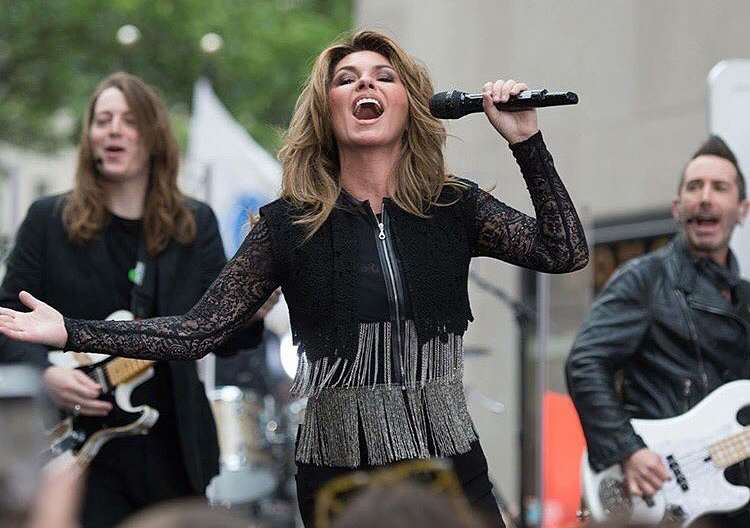 My guitarist friend Joshua Ray Gooch called me to fill in on a little blues gig he was doing on Tuesday nights at a hotel bar. For about two years, he had been playing in Shania’s band during her Las Vegas residency. We had a great time playing, and he asked me if I’d be interested in being considered for Shania’s band, as he heard that she might be changing things up a bit for the 2015 tour. Of course, I said yes, and Josh threw my name in the hat… As it turned out, the musical director was Will Hollis, an MD with whom I had worked on the Dancing With The Stars tours from 2007-2009. I was invited to audition a couple of months later, got the gig, and embarked on what was an absolutely incredible tour.
My guitarist friend Joshua Ray Gooch called me to fill in on a little blues gig he was doing on Tuesday nights at a hotel bar. For about two years, he had been playing in Shania’s band during her Las Vegas residency. We had a great time playing, and he asked me if I’d be interested in being considered for Shania’s band, as he heard that she might be changing things up a bit for the 2015 tour. Of course, I said yes, and Josh threw my name in the hat… As it turned out, the musical director was Will Hollis, an MD with whom I had worked on the Dancing With The Stars tours from 2007-2009. I was invited to audition a couple of months later, got the gig, and embarked on what was an absolutely incredible tour.
You’ll be headlining the BBC’s Concert in Hyde Park with her to 50,000 fans this year. How do you prepare for a gig like that?
Well, pretty much the same way I’d prepare for any gig! Do my homework, make sure I have all the right gear together, and then just RELAX and have fun! I honestly don’t get nervous in front of large crowds… I may get a few butterflies if it’s the first show of a brand new gig, but once I’ve been playing with someone for a while, I don’t even think about it. I just try to stay focused, play and perform to the best of my abilities, and enjoy the ride.
Do you have a warm up routine?
Definitely… It varies in duration depending on the pre-show circumstances, but I try to always cover these four things:
- Hands/fingers: I’ve been doing the same exercises since my college days. I picked up some great warm-up exercises from both John Patitucci’s and Gary Willis’ DCI instructional videos, and I’ve been doing them ever since. Sometimes I’ll also jam along to some Tower of Power… Playing Rocco’s lines always gets the chops moving!
- Vocals: I’ve been using Brett Manning’s Singing Success program, and I’ll try to go through a full CD’s worth of vocal exercises before a show if time allows. I’ve also got a Spotify playlist of a bunch of songs that are in my wheelhouse, so every now and then I’ll just sing a few full tunes as a warm up.
- Body: About a half hour before showtime, I try to get my body loosened up and get the blood flowing. I’ll do planks, pushups, a few core exercises, and some ballistic stretching to get my joints moving and a little adrenaline going.
- Mind: One of the most challenging things about playing a show is staying focused for the duration of the performance. With Air Supply, we’re not allowed to use our phones or laptops 30 minutes before showtime… I think that’s a great rule and a great way to quiet the mind before the show. One thing I like to do at some point before a show is either go out into the venue and spend a minute or so looking at the stage, or look at the crowd from side stage a few minutes before I go on. I do this for two reasons: Reason number one is to constantly remind myself how fortunate I am that I get to do what I’ve always dreamed of and to approach the performance with the utmost gratitude. Reason number two is to remind myself that there are a lot of people that paid hard-earned money to see a good show and that it’s my responsibility to give them what they paid for. I’m also trying to get more into meditation, and I’ve been doing some quick 10-minute meditations to get my mind right for showtime.
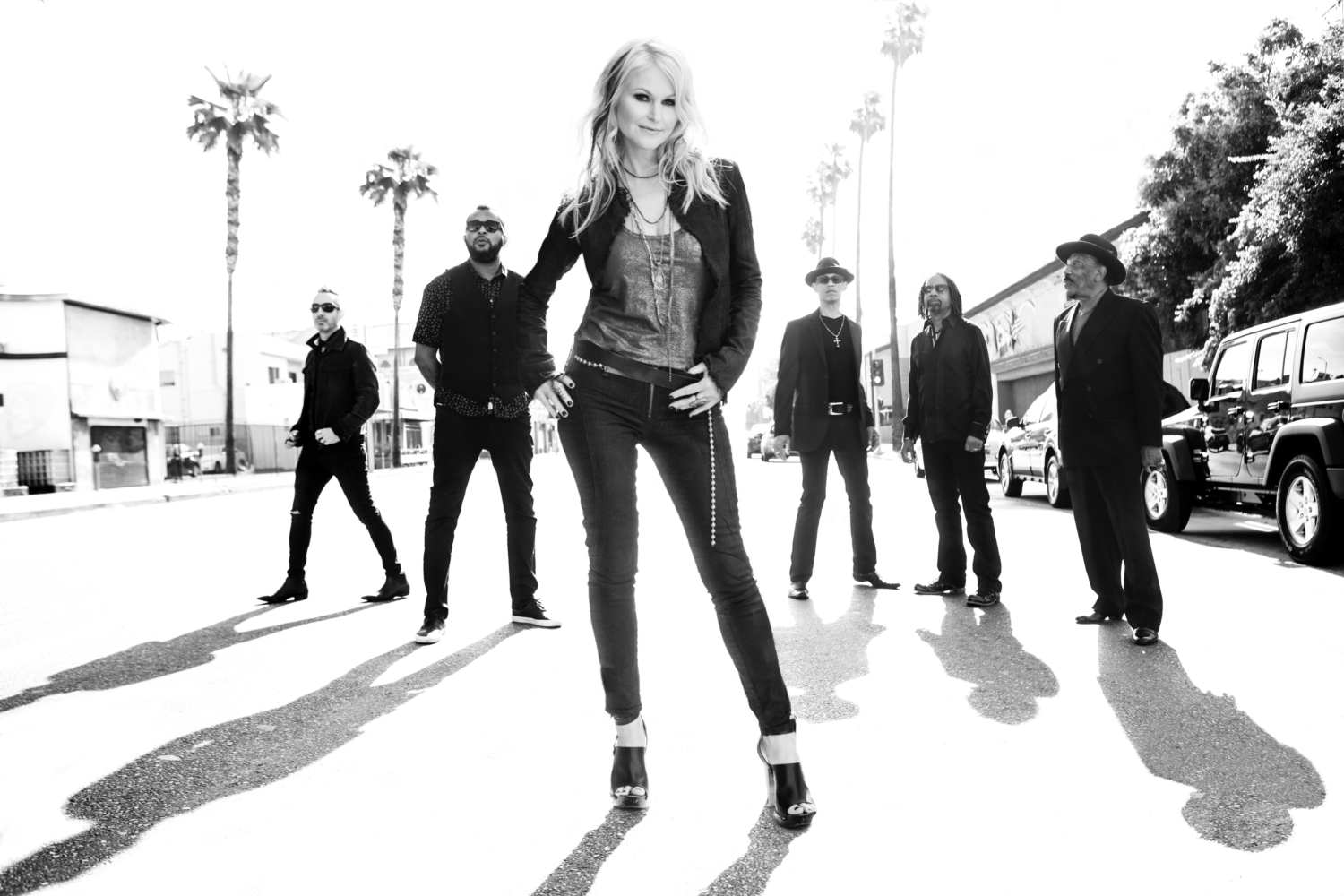
You’re also playing with Mindi Abair and Air Supply among other projects. How do you balance playing in so many groups?
That’s the tough part… scheduling. In a perfect world, they’ll all be working at different times, so I can just jump from one to the next. But of course, it doesn’t always work out that way. Sometimes there’s some overlap, and that’s when things get tricky. Every now and then I’ll have to sub one gig out in order to do another, forgo sleeping and catch a redeye flight to make it to the next band’s gig on time, etc. The trick is to constantly keep track of my calendar, try not to make any mistakes with travel planning (as being off by one day can screw everything up), and cover my ass if I need to miss a gig. That means giving plenty of advance notice and preparing a sub as best as I can. My problem is that I love playing with all of my bands, and don’t want to let any of them go!
What advice do you have for bassists wanting to break into musical directing gigs. What does it take to handle them?
There are so many aspects of an MD gig; I’ll try to touch on a few and be as concise as I can. In addition to being a solid, knowledgeable, well-rounded musician yourself, It helps to know a lot of musicians in various circles, so that you can put together the perfect combination of players for that particular gig. One should also be familiar with software such as Pro Tools, Ableton, Logic, DP, etc. as building/running backing tracks has become an important part of most of today’s touring acts. An MD also needs to be a good communicator and have people skills. You’re the liaison between the artist and the band, and you need to know how to facilitate the working relationship between both. Those are just a few bullet points… We could easily do a multi-page article on this topic alone.
Has working on BassTracksOnline.com taught you anything about what people ask for and what they really need? (Any insight from that process?)
Yes, of course. It’s a little trickier than working in the studio with someone in person, as the client and I are usually just trading short emails back and forth. I’ve learned that when a client contacts me, I need to ask as many questions as possible. What kind of tone is he/she going for? Is there a particular song, artist, or band that has influenced this track? Does he/she prefer simple or busy bass lines? Sometimes my clients are very specific about what they want. Therefore it’s easier for me to figure out what they’re looking for. Other times they have no idea how to communicate in musical terms, and that’s when I have to ask a lot of questions. And other times, they’re familiar with my work and have contacted me because they want me to just use my best judgment and “do my thing”. I have a lot of repeat clients, which helps because I generally know what they like. But it’s all about communication… asking questions, suggesting, giving several options, etc.
What kind of setups do you use for each band?
Shania Twain:
- Basses: 1963 Fender Precision, La Bella Olinto P-bass, Lakland Skyline Decade with Nordstrand Big Blades pickups (tuned Bb Eb Ab Db), Lakland Skyline Darryl Jones Signature (tuned B E A D), Martin BCPA4 acoustic
- Synth: Dave Smith Instruments Mopho SE
- Rig: We don’t use amps, so I use a pedalboard-based rig, with a sub either underneath or behind my riser so that I can feel the low end vibration. Pedalboard includes: Tuner, Radial Twin City splitter, Darkglass Vintage Microtubes overdrive, Origin Effects Cali 76 compressor, Noble tube preamp/DI (for the electric basses), Radial JDI stereo DI (for the acoustic and synth). Sennheiser wireless.
Air Supply:
- Basses: Moollon P-Classic 4-string tuned a whole step down, and I’m currently experimenting with different 5-strings, also tuned a whole-step down.
- Pedals: Tuner, Digitech Dirty Robot synth, MXR Phase 95 phaser, Origin Effects Cali 76 compressor, Noble tube preamp/DI.
- Amp: Aguilar DB 750 or 751 with DB 410 or 810 cabinets
- Wireless: Lectrosonics
Mindi Abair and The Boneshakers:
- Bass: 1976 Fender Precision
- Pedals: Line 6 Relay G50 wireless, Tuner, Darkglass Vintage Microtubes overdrive, Aguilar Filter Twin, Hotone Bass Press wah/volume, TC Electronic Ditto looper.
- Amp: Aguilar DB 750 or 751 with DB 410 or 810 cabinets
- Strings: La Bella RX Stainless Steel, Low Tension Flats, and Golden Alloy Acoustic

